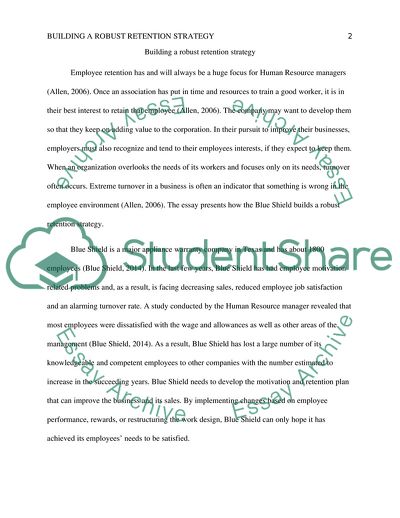Building a robust rentention strategy Essay Example | Topics and Well Written Essays - 750 words. https://studentshare.org/human-resources/1829020-building-a-robust-rentention-strategy
Building a Robust Rentention Strategy Essay Example | Topics and Well Written Essays - 750 Words. https://studentshare.org/human-resources/1829020-building-a-robust-rentention-strategy.


